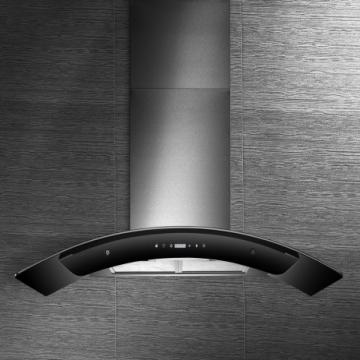Enterprises' accelerated transformation technology choices are difficult for upstream and downstream color TV
Color TV upstream and downstream companies are accelerating their transition to the OLED industry. However, at present, the OLED industry has been divided into two technical schools. For companies, how to choose will determine the future industrial status. However, the product is not mass-produced at present, and the enterprise is once again faced with a difficult choice because it is unable to learn the consumption direction.
Domestic enterprises begin to accelerate transformation
A few days ago, the first OLED TV of the domestic machine manufacturer Skyworth was launched. This is the first domestic brand to launch an OLED machine. Previously, only Samsung and LG products met consumers globally. OLED stands for Organic Light Emitting Diode, which is the latest display technology. It can compress the thickness of the TV to less than 1cm, which is far better than the average thickness of the LCD TV of 5-15cm, and truly achieves the effect of being as thin as a wing. Because of its portability and energy saving, it is regarded as the next generation of display technology. Skyworth Group spokesman Li Congxiang said that the thickness of new products is currently 5mm.
Skyworth was more encouraged to launch the first OLED TV. Li Cong wanted to claim that the screen came from South Korean partner LGD. In addition, Skyworth had fully mastered the remaining front-end technologies. In addition to machine manufacturers, domestic upstream companies are also quickening their pace and accelerating their transformation. A few days ago, China's first and the world's second 5.5-generation AMOLED production line-BOE's 5.5-generation AMOLED production line went into production. This project has a designed production capacity of 54,000 glass substrates / month, and its product positioning is mainly for small and medium-sized LTPS and AMOLED high-end display devices.
Huaxing Optoelectronics is not to be outdone. After the first phase of the panel project is fully produced, it added the second phase investment. It is understood that the monthly production capacity of the Huaxing Optoelectronics Phase II project is 100,000 pieces, of which 70,000 are amorphous silicon semiconductor glass substrates and 30,000 are oxidized. Semiconductor glass substrate (including some AMOLED).
Key technology sub-genre
Domestic companies try to get rid of what the industry calls "the curse of being out of production", the gap between the speed of research and development and foreign companies is gradually shortened, and the products also use mainstream display technology. Li Congxiang particularly emphasized that the first OLED adopted WRGB display scheme. It is understood that WRGB technology is that white light technology adds white to the traditional red, green and blue colors, making the color display more abundant. Regarding the choice of this technology, Li Congxiang said that on the one hand, it is subject to the industrial chain, but the choice of key technologies is still consumer-oriented. Skyworth believes that such technology is more competitive in the market.
This technology was developed by LG alone. Samsung's expertise is tri-color RGB technology. In July last year, the two companies disputed the two technologies very fiercely. At that time, both companies claimed that their technology was more advanced. They also hoped to pull in downstream companies to form a strategic alliance to accelerate the spread of their respective technologies.
In addition, with the rapid rise of Chinese panel companies, Korean companies realize that the choice of panel companies is more important to the popularization of technology. Because the strengths of Huaxing Optoelectronics and BOE are increasing, there are already many fans.
Difficult choices for domestic companies
For upstream panel companies, which technology is more important, TCL said yesterday that OLED currently uses RGB three-color technology, and Zhang Yu, vice president of BOE, said that the Ordos 5.5 generation line project uses RGB technology, but it also already has WRGB technology. The future decision is still left to the market, whichever is welcomed by the market, the proportion of which product is expanded.
At the beginning of 3D's launch, such a choice had stumped domestic machine manufacturers. At that time, Samsung's shutter type and LG's polarized type would become the mainstream, which made the domestic machine enterprises hurt their brains. Now these two companies once again give China domestic There is a problem with the panel and machine companies. Household appliance analyst Liu Buchen said that the choice of key nodes in the industry is very important, which determines the company's future development speed. Panasonic is desperate to choose plasma and stay away from the LCD camp. The example of falling into the quagmire of losses has already fully demonstrated the importance of industrial judgment. But these two technologies are not as opposites as liquid crystal and plasma, and may also be parallel in the future.
It seems that in the future, the trend of technology integration may also appear. Not long ago, Samsung Display CEO Jin Qinan said that Samsung Display ’s upcoming OLED TV may use white OLED panels. "At present, the product is not yet on the market, and it is not easy to say who will become the mainstream," Liu Buchen said.
With a professional R & D team, the company has applied for 296 patents and 231 granted patents, including 43 invention patents. With a high technical qualification, the company has participated in the development of 14 national and industrial standards and organized several industry technical interchange meetings

Extractor Hood,Durable Swift Cooker Hoods,Kitchen Extractor Hood,Auto Clean Range Hoods
xunda science&technology group co.ltd , https://www.gasstove.be